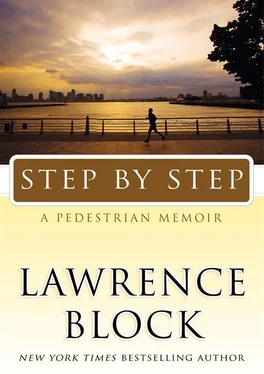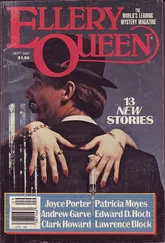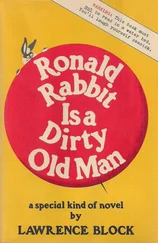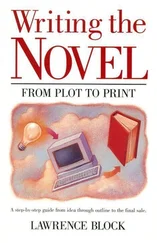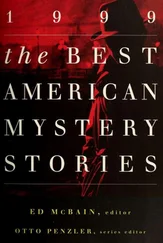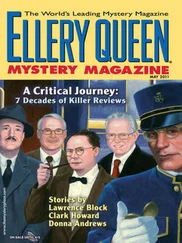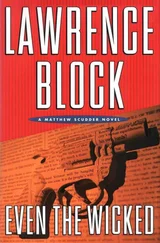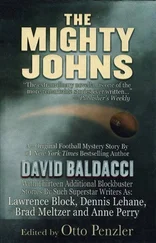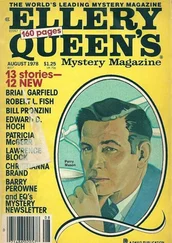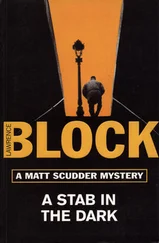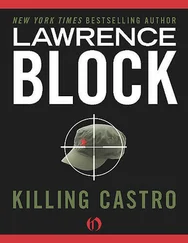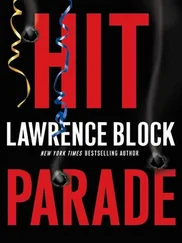Lawrence Block - Step by Step
Здесь есть возможность читать онлайн «Lawrence Block - Step by Step» весь текст электронной книги совершенно бесплатно (целиком полную версию без сокращений). В некоторых случаях можно слушать аудио, скачать через торрент в формате fb2 и присутствует краткое содержание. Год выпуска: 2009, ISBN: 2009, Издательство: William Morrow, Жанр: Биографии и Мемуары, Юмористические книги, на английском языке. Описание произведения, (предисловие) а так же отзывы посетителей доступны на портале библиотеки ЛибКат.
- Название:Step by Step
- Автор:
- Издательство:William Morrow
- Жанр:
- Год:2009
- ISBN:978-0-06-172181-6
- Рейтинг книги:3 / 5. Голосов: 1
-
Избранное:Добавить в избранное
- Отзывы:
-
Ваша оценка:
- 60
- 1
- 2
- 3
- 4
- 5
Step by Step: краткое содержание, описание и аннотация
Предлагаем к чтению аннотацию, описание, краткое содержание или предисловие (зависит от того, что написал сам автор книги «Step by Step»). Если вы не нашли необходимую информацию о книге — напишите в комментариях, мы постараемся отыскать её.
bestselling author comes a touching, insightful, and humorous memoir of an unlikely racewalker and world traveler.
Step by Step — читать онлайн бесплатно полную книгу (весь текст) целиком
Ниже представлен текст книги, разбитый по страницам. Система сохранения места последней прочитанной страницы, позволяет с удобством читать онлайн бесплатно книгу «Step by Step», без необходимости каждый раз заново искать на чём Вы остановились. Поставьте закладку, и сможете в любой момент перейти на страницу, на которой закончили чтение.
Интервал:
Закладка:
I kept warm by running in the Gay Run, a 5K race in Golden Gate Park, and the souvenir orange tank top would become a treasured possession, albeit one I couldn’t wear just anywhere. A couple of days later I got on another bus and got off in Los Angeles.
I participated in one race while I was in L.A., another 5K, this one in aid of St. Joseph’s Medical Center. I’d notched a time of 23:51 in San Francisco, and trimmed that to 23:50 in L.A. I figured I’d stay a week or so — I had friends to visit in the area — and then I’d head east.
The idea of another three thousand miles on buses was not very appealing. I didn’t want the ordeal of a nonstop bus ride across the continent, nor did I feel like breaking it up and taking two or three weeks to get back to New York. I’d been traveling a long time, and I was ready to be home. What I really wanted to do was fly, but I couldn’t really afford the airfare.
And then a friend of mine, a film and TV writer, popped up with a proposition. He’d managed to take on more work than he could get done on time, and proposed that he hire me to write the first draft of a made-for-television film. It was a project he was pretty sure wouldn’t get greenlighted anyway, and he’d get paid for delivering the first draft, even as I’d get paid for delivering it to him. He’d be guilty of a gross infraction of Writers Guild’s work rules, but I wasn’t a member, so that wasn’t really a problem for me. And, as long as we both kept our mouths shut, it wouldn’t be a problem for him, either.
So I took a suite for two weeks at the Magic Hotel, where I’d lived for six months on an earlier sojourn in L.A., and I hammered out the screenplay, and got paid enough so that I could forget about Greyhound and fly back to New York, with enough money left over to find myself a place to live.
12
the apartment i found was on Jane street, in the basement of a back house — i.e., a house situated immediately behind another house that actually fronted on the street. You had to go through a narrow little passage to get to it, and then you went down a flight of steps, and then you were there, and God help you. It was as Bohemian and romantic as any dewy-eyed arrival from Oshkosh could possibly have wanted, and it was dark and smelled of mold and mildew, and it managed to make me nostalgic for that windowless $20-a-week palace I’d had in Fargo.
I stuck it out for two months there, then moved in with a girlfriend in Washington Heights. I entered four NYRR races, the 10K New Harlem I’d run back in 1979 and a trip of five-milers, two in Queens and one in Central Park. My times in the five-mile races were remarkably consistent, ranging from 39:22 to 39:50.
When I wasn’t racing, or working on a book, I was in the park bordering the Hudson, running down to Seventy-second Street and back. Because one of the first things I’d found out on returning to New York was that my 1981 New York Marathon entry had been accepted, and on the last Sunday in October I’d be participating in my fourth marathon of the year.
The course then was essentially the same as it is now, with the start on the Staten Island side of the Verrazano Bridge. I started out running, and I was still running at the halfway point, in the Greenpoint section of Brooklyn, when I heard my name called and looked up to see Pat Trese and his girlfriend of the moment; he had once again showed up to cheer me on.
My knee would have been hurting by then, but not enough yet to make me change my gait. I’m not sure just when I switched to racewalking, but it seems to me I must have made the switch around fifteen or sixteen miles, shortly before crossing the Queensboro Bridge into Manhattan. I walked the rest of the way, except for the last hundred yards, when I forced myself into a run — not to get to the finish line faster, but to keep any of the scorers from listing me as a walker. The marathon had a special division for walkers, with prizes awarded; my time of 4:39:38 wasn’t anywhere near good enough to put me in contention for a prize, but I didn’t want to leave anything to chance.
4:39:38.
My time was four minutes faster than Madrid, thirteen minutes slower than North Dakota. You couldn’t really compare one performance with another, New York was certainly a much more difficult course than Grand Forks, but it was even harder for me to compare the three races because the most important element, it seemed to me, was how much running I was able to do. The more I ran, the less time it took me to cover the distance.
It seemed unlikely that I’d ever be able to run the entire 26.2 miles of a marathon. I could run shorter races — sometimes with pain, sometimes without — but sooner or later in the course of a marathon my knee would announce that it was having no more of this, thanks all the same. The more I pushed it, the more I was risking doing lasting damage.
Nowadays a whole host of marathoners combine walking and running, and one running maven, Jeff Galloway, prescribes a regular routine of walking breaks, not only to enable new runners to reach the finish line of a marathon, but as a way for more experienced runners to increase their overall speed. He swears it works, and there are plenty of run/walk racers who swear by Galloway, while other runners and walkers swear at him, irritated by all those Galloweenies who rush to edge in front of them only to switch abruptly to a walk.
Back in 1981, though, it seemed to me that one was either a walker or a runner. Walking breaks had got me around Washington Square at the beginning, but the day I knew I was a runner was the day I didn’t have to take them anymore.
So what was I now? If I was a runner, I ought to be able to run the whole race. And if I couldn’t, then maybe I ought to walk the whole race.
I had one more marathon on my schedule for the year. It was the Jersey Shore Marathon, coming up on the first Sunday in December. I thought about it, and I decided to walk it. All of it, start to finish, and I wouldn’t even cheat and run fifty yards across an intersection, as I’d been forced to do in London.
The course, from what I’d read, was not appreciably hillier than the one in North Dakota, and the weather figured to be ideal for racing. There was only one problem. I was going to have to finish in under five hours.
See, that was the cutoff time if you wanted a jacket.
Virtually every race gave you a T-shirt, and all you generally had to do to get one was enter. They handed it to you when you picked up your number, and nobody cared if you finished the race, or even started it.
But Jersey Shore gave out these jackets. Windbreakers, I guess you’d call them, and they were pretty nice, handsome blue jackets of some sort of shiny material, with the race logo on it. I’d seen people wearing last year’s jackets, and of course I wanted one.
But they gave them to you when you finished, and you had to do so in under five hours to qualify. (It has since occurred to me that this was probably not the strict requirement it seemed at the time, that the reasoning was that the finish line might shut down at the five-hour mark, or not long after it, and that they thus couldn’t guarantee you a jacket if you didn’t make it home under the wire. If they were still hanging out at the finish line fifteen minutes past the hour, and if some poor bastard came limping across the line, and they still had jackets left, do you suppose they’d tell him he was out of luck? Probably not — but all I knew back then was that I damn well had to make it in five hours if I was going to get that fucking jacket.)
Well, how hard could that be? I’d done four marathons already, and three of them had beaten that five-hour cutoff with plenty of time to spare.
Читать дальшеИнтервал:
Закладка:
Похожие книги на «Step by Step»
Представляем Вашему вниманию похожие книги на «Step by Step» списком для выбора. Мы отобрали схожую по названию и смыслу литературу в надежде предоставить читателям больше вариантов отыскать новые, интересные, ещё непрочитанные произведения.
Обсуждение, отзывы о книге «Step by Step» и просто собственные мнения читателей. Оставьте ваши комментарии, напишите, что Вы думаете о произведении, его смысле или главных героях. Укажите что конкретно понравилось, а что нет, и почему Вы так считаете.
